Charts produced by the crew of HMS Triton
- Admiralty Chart No 1543 England - east coast, Yarmouth and Lowestoft Roads surveyed by Staff Comr. T.H. Tizard, R.N. and the officers of H.M.S. Triton 1885 RMG L1221, Published 1886
HMS Triton was a paddle steamer which was used by the Royal Navy for many years as a survey ship. [1] The ship was commissioned by Staff Commander Thomas Henry Tizard, who had started a survey of the coast of England in 1879 in HMS Porcupine, which was sold after HMS Triton became available for use. Tizard continued this work until 1891. [2]
Following this HMS Triton undertook survey work in Pacific Ocean. [1]
In 191[ when? ] she was retired from active service, and with her engines and funnels removed became a training ship at the Thames Nautical Training College.

HMS Beagle was a Cherokee-class 10-gun brig-sloop of the Royal Navy, one of more than 100 ships of this class. The vessel, constructed at a cost of £7,803, was launched on 11 May 1820 from the Woolwich Dockyard on the River Thames. Later reports say the ship took part in celebrations of the coronation of King George IV of the United Kingdom, passing through the old London Bridge, and was the first rigged man-of-war afloat upriver of the bridge. There was no immediate need for Beagle so she "lay in ordinary", moored afloat but without masts or rigging. She was then adapted as a survey barque and took part in three survey expeditions.

The Challenger expedition of 1872–1876 was a scientific programme that made many discoveries to lay the foundation of oceanography. The expedition was named after the naval vessel that undertook the trip, HMS Challenger.
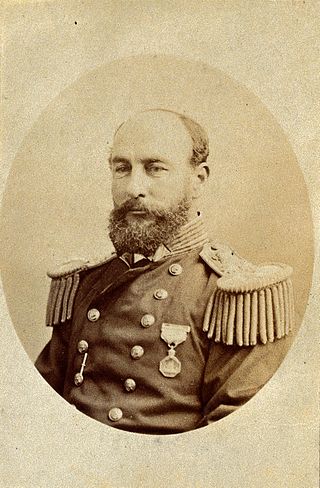
Vice-Admiral Sir George Strong Nares was a Royal Navy officer and Arctic explorer. He commanded the Challenger Expedition, and the British Arctic Expedition. He was highly thought of as a leader and scientific explorer. In later life he worked for the Board of Trade and as Acting Conservator of the River Mersey.
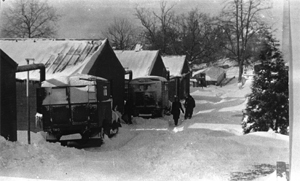
The Telecommunications Research Establishment (TRE) was the main United Kingdom research and development organization for radio navigation, radar, infra-red detection for heat seeking missiles, and related work for the Royal Air Force (RAF) during World War II and the years that followed. It was regarded as "the most brilliant and successful of the English wartime research establishments" under "Rowe, who saw more of the English scientific choices between 1935 and 1945 than any single man."

HMS Challenger was a steam-assisted Royal Navy Pearl-class corvette launched on 13 February 1858 at the Woolwich Dockyard. She was the flagship of the Australia Station between 1866 and 1870.

Admiralty charts are nautical charts issued by the United Kingdom Hydrographic Office (UKHO) and subject to Crown Copyright. Over 3,500 Standard Nautical Charts (SNCs) and 14,000 Electronic Navigational Charts (ENCs) are available with the Admiralty portfolio offering the widest official coverage of international shipping routes and ports, in varying detail.

The Commander-in-Chief, The Nore, was an operational commander of the Royal Navy. His subordinate units, establishments, and staff were sometimes informally known as the Nore Station or Nore Command. The Nore is a sandbank at the mouth of the Thames Estuary and River Medway.

Vice Admiral Sir Henry Kellett, was a British naval officer and explorer.

CSS Acadia is a former hydrographic surveying and oceanographic research ship of the Hydrographic Survey of Canada and its successor the Canadian Hydrographic Service.
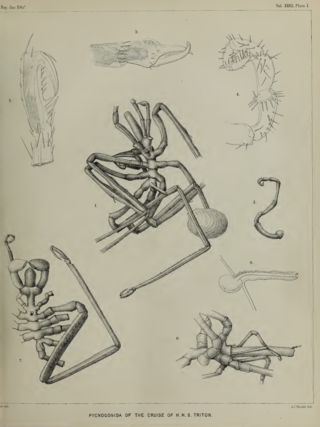
Thomas Henry Tizard was an English oceanographer, hydrographic surveyor, and navigator.
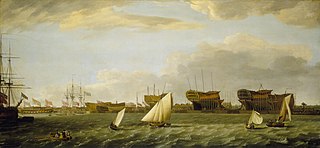
Blackwall Yard is a small body of water that used to be a shipyard on the River Thames in Blackwall, engaged in ship building and later ship repairs for over 350 years. The yard closed in 1987.
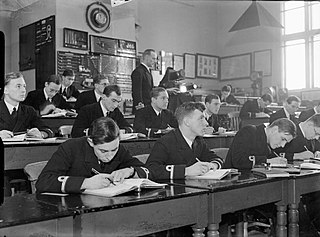
The Royal Naval Engineering College was a specialist establishment for the training of Royal Navy engineers. It was founded as Keyham College in 1880, new buildings were opened in Manadon, Devon in 1940 and the old college site at Keyham closed in 1958. The college was renamed HMS Thunderer in 1946, and closed in 1995.

HMS Herald was an Atholl-class 28-gun sixth-rate corvette of the Royal Navy. She was launched in 1822 as HMS Termagant, commissioned in 1824 as HMS Herald and converted to a survey ship in 1845. After serving as a chapel ship from 1861, she was sold for breaking in 1862.

Sir Frederick John Owen Evans, was an officer of the Royal Navy. He became a distinguished hydrographer during his career and served as Hydrographer of the Navy.
Thomas Graves was an officer of the Royal Navy and naturalist who worked extensively as a surveyor in the Mediterranean.

The Gunnery Division was a Directorate of the Admiralty Naval Staff of the Royal Navy responsible for the tactical use of naval weapons and the training of naval personnel in relation to operational requirements. It was established in 1920 when the Gunnery and Torpedo Division was separated into an independent Gunnery Division and Torpedo Division. It existed until 1964 when the Department of Admiralty was abolished and replaced by a new Ministry of Defence.

Vice-Admiral Sir John Augustine Edgell, KBE, CB, FRS was an officer in the Royal Navy and Hydrographer of the Navy from 1932 to 1945. He was noted for his support for innovations such as echo sounding and radio navigation, for the surveying and chart production operations of his department during World War II, and for his advocacy of the science of oceanography
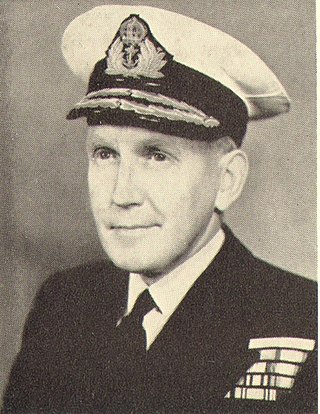
Sir Archibald Day was an officer in the Royal Navy and Hydrographer of the Navy from 1950-1955. He played an important part in planning the evacuation from Dunkirk in 1940, and wrote a history of the Hydrographic Service.

Admiral Frederick Bullock was a Royal Navy officer noted for his work as a surveyor, particularly in the Thames Estuary.

Edward Killwick Calver was a Captain in the Royal Navy, and hydrographic surveyor. He is particularly noted for his surveying work in the east of Britain, and as the captain of HMS Porcupine, in oceanographic voyages in 1869 and 1870.